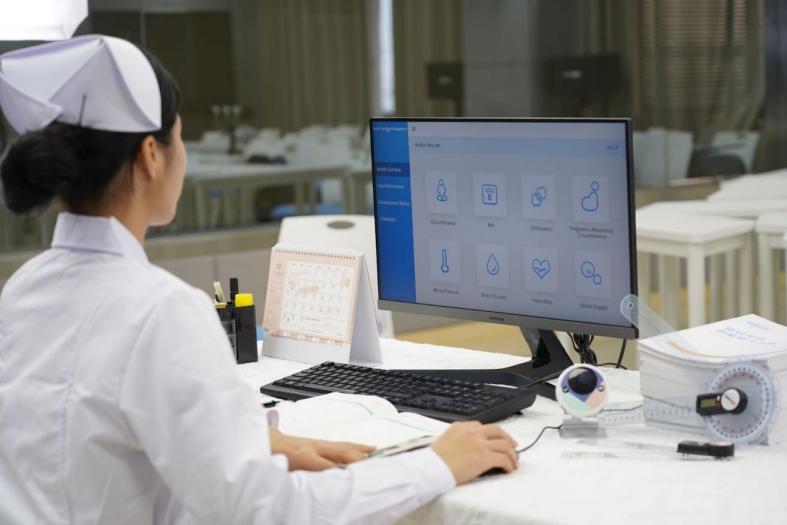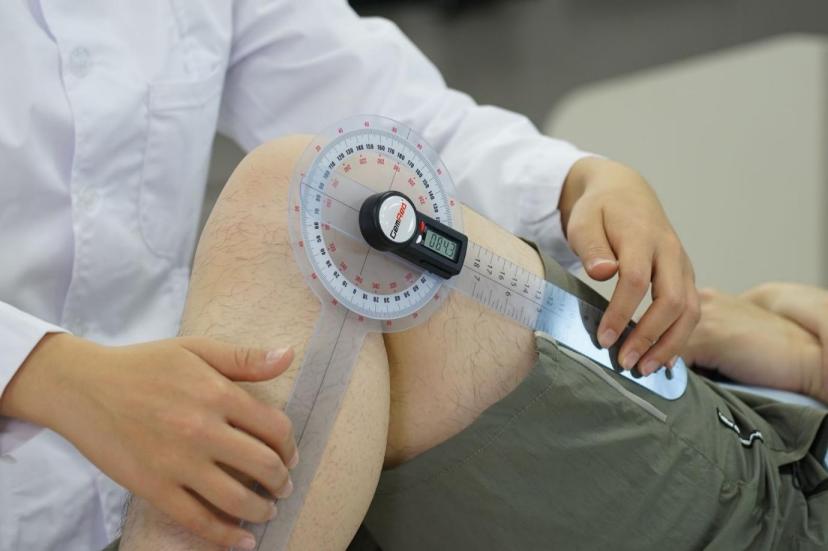GemRed Goniometer: A Tool for Measuring Angles
2023.09.11 / By Gemred
GemRed digital goniometer is a scientific device employed for the measurement of angles or the relative orientation of objects. It is comprised of a graduated scale and a pivoting arm or pointer that can be rotated to gauge the angle between two objects or the angular deviation of an object from a reference point.

Goniometers are available in diverse configurations, encompassing basic protractors for two-dimensional angle measurements and more sophisticated instruments for precise three-dimensional angular assessments. They find extensive utility in numerous domains, including physics, engineering, medicine, and geology, where they serve the purpose of precisely ascertaining angles and orientations.
GemRed Goniometer Components
The Role of Arms
Within the goniometer, its arms play a fundamental role, with distinct functions:
1)Stationary Arm: The stationary arm acts as a fixed reference point for taking measurements. It remains immobile while the other arm is adjusted to determine the angle or orientation of an object concerning this reference. The stationary arm contributes to measurement stability and provides a consistent starting point for angle assessment.
2)Movable Arm: The movable arm is the adjustable part of the goniometer, capable of pivoting or rotating. Its primary responsibility is to measure the angle or orientation of the object under examination. Users achieve accurate measurements by aligning the movable arm with the object or the desired angle.
The Graduated Scale or Protractor
The graduated scale comprises evenly spaced markings or divisions encircling its circumference. These marks are calibrated in degrees, radians, or other angular measurement units, depending on the specific goniometer design. Users read the angle by aligning the movable arm with these graduations on the scale, enabling precise angle determination.
The Locking Mechanism and Its Importance
The presence of a locking mechanism within many goniometers holds considerable significance:
1)Locking or Clamping: Goniometers frequently feature a locking or clamping mechanism that allows users to secure the movable arm firmly in place once the desired angle measurement has been obtained. This critical feature ensures that the measured angle remains constant, preventing accidental adjustments while users record or work with the measurement.
2)Importance: The locking mechanism plays a pivotal role in upholding the accuracy and reliability of angle measurements. Without it, there is a risk of inadvertent movement of the movable arm, potentially leading to inaccurate readings. By securing the arm in place, users can have confidence in the stability of their measurements, especially in applications demanding precision.
Applications of GemRed Digital Goniometers
Engineering
1)Mechanical Component Alignment: In the realm of engineering, GemRed goniometers are indispensable instruments employed for achieving precise alignment of mechanical components. Whether in manufacturing processes or maintenance tasks, engineers rely on goniometers to ensure the accurate orientation and assembly of gears, shafts, and other crucial parts, ensuring optimal efficiency and safety.
2)Structural Analysis: Within civil and structural engineering, GemRed goniometer finds purpose in evaluating the angles and orientations of building components, such as beams and trusses. This data aids engineers in upholding structural integrity, identifying potential weaknesses, and optimizing load-bearing capacity in construction projects.
Medicine
1)Joint Mobility Assessment: Goniometers play a pivotal role in the healthcare field, facilitating the assessment of joint mobility and the measurement of range of motion in patients. Healthcare professionals, including physicians and physical therapists, employ these devices to gauge the angles at which joints can move. This information proves invaluable in diagnosing and treating musculoskeletal conditions, and injuries, and planning effective rehabilitation strategies.
2)Physical Therapy: Physical therapists frequently incorporate GemRed goniometer into their practice to closely monitor patient progress during rehabilitation exercises. By tracking changes in joint angles over time, therapists can tailor treatment plans and exercise regimens to enhance a patient’s mobility and overall functionality.
Physics
1)Research Experiments: Goniometers serve as indispensable tools in various physics experiments, enabling researchers to meticulously measure the angles and orientations of experimental setups and equipment. The precision offered by goniometers is particularly critical in studies encompassing particle physics, optics, and materials science.
2)Optics and Wave Measurement: Goniometers find extensive application in optics, allowing for the precise measurement of angles related to reflection and refraction. This capability aids in the design and analysis of optical systems. Furthermore, GemRed goniometer is instrumental in wave measurement experiments, facilitating investigations into phenomena such as diffraction and interference patterns.

Other Fields Where GemRed Goniometers Are Utilized
GemRed Goniometer exhibits versatility and precision, rendering them valuable instruments in numerous other fields:
1)Geology: Geologists rely on goniometers to ascertain the orientation of geological features like rock layers, fault lines, and mineral veins. This information is essential for comprehending the geological history of an area and for conducting mineral exploration.
2)Surveying: Surveyors harness goniometers to accurately measure angles and directions when mapping land, establishing property boundaries, or conducting land surveys.
3)Navigation: Nautical and aviation navigation depend on precise angle measurements to determine positions and headings. Instruments such as sextants and compasses utilize goniometric principles for angle determination.
4)Robotics and Automation: In the domains of robotics and automation, goniometers play a pivotal role in governing the movement and positioning of robotic arms and tools. This ensures exactitude in tasks encompassing welding, assembly, and 3D printing.
5)Computer Graphics and Animation: Goniometers are instrumental in computer graphics and animation for defining the orientation of 3D objects and cameras. Accurate angle measurements are paramount for the creation of realistic virtual environments.
Utilizing a goniometer stands as a fundamental skill in various domains, including physical therapy, orthopedics, and biomechanics. A goniometer is a tool employed for the measurement of joint angles, aiding in the evaluation of range of motion, tracking progress in rehabilitation, and diagnosing musculoskeletal conditions.
Fundamental Operation of GemRed Goniometer
Familiarize Yourself with the GemRed Goniometer
Acquaint yourself with the various components of the goniometer, typically consisting of two arms with a central hinge and a protractor-like scale.
1)Patient Positioning:
Ensure the patient is comfortably positioned and relaxed.
The joint under examination should be exposed and easily accessible.
2)Identify the Target Joint:
Determine the specific joint you intend to measure, with common examples including the knee, elbow, shoulder, and wrist.
3)Locate Anatomical Landmarks:
Identify the crucial bony landmarks associated with the joint. For instance, when assessing knee flexion, locate the greater trochanter, lateral epicondyle of the femur, and lateral malleolus of the fibula.
4)Align the Goniometer:
Align one arm of the goniometer with one of the identified bony landmarks, and position the other arm with the second landmark. Ensure that the hinge of the goniometer directly overlies the axis of motion of the joint.
5)Read the Angle:
Read the angle measurement on the protractor-like scale at the intersection of the second arm of the goniometer. This reading represents the joint’s angle.
Ensuring Precision
1)Maintain Consistency:
Consistently measure the joint in the same position or plane to guarantee accuracy. Consistency is vital for monitoring rehabilitation progress.
2)Employ Stabilization:
In some cases, it may be necessary to stabilize the proximal segment (the part of the limb closest to the body) to prevent unwanted movement during measurement.
3)Document the Findings:
Thoroughly document the angle measurement, along with pertinent information such as the date, patient’s name, and any pain or discomfort experienced during the evaluation.
Tips and Precautions
1)Practice:
Proficiency in using a goniometer requires practice. Familiarize yourself with various joint measurements and engage in practice sessions with willing volunteers or colleagues.
2)Communicate with the Patient:
Clearly explain the procedure to the patient, ensuring their comfort and relaxation throughout the measurement.
3)Handle with Care:
Treat the goniometer delicately and gently guide the joint’s movement to prevent any discomfort or injury to the patient.
4)Consider Functional Range:
In certain situations, it may be beneficial to assess the functional range of motion, encompassing the joint’s movement during everyday activities, rather than isolated measurements.
5)Seek Training:
If uncertainty arises regarding the use of the goniometer or the interpretation of the results. Please consider seeking guidance or training from a qualified health care professional or therapist.
Accuracy in the use of goniometers is critical for assessing and monitoring joint function. Plays an important role in patient care and recovery.
CONCLUSION
Within the domains of healthcare, physical therapy, orthopedics, and biomechanics, the GemRed digital goniometer emerges as an essential tool for the assessment and monitoring of joint angles. Leveraging its precision in measurement, this device assumes a critical role in the diagnosis of musculoskeletal conditions, the tracking of rehabilitation progress, and the enhancement of patient care.
To sum up, the GemRed Goniometer transcends mere instrumentality; it stands as a valuable resource, empowering healthcare professionals to make informed decisions, foster recovery, and elevate the overall well-being of their patients. Its accuracy and adaptability render it an indispensable ally in the quest for improved joint health and enhanced mobility.
